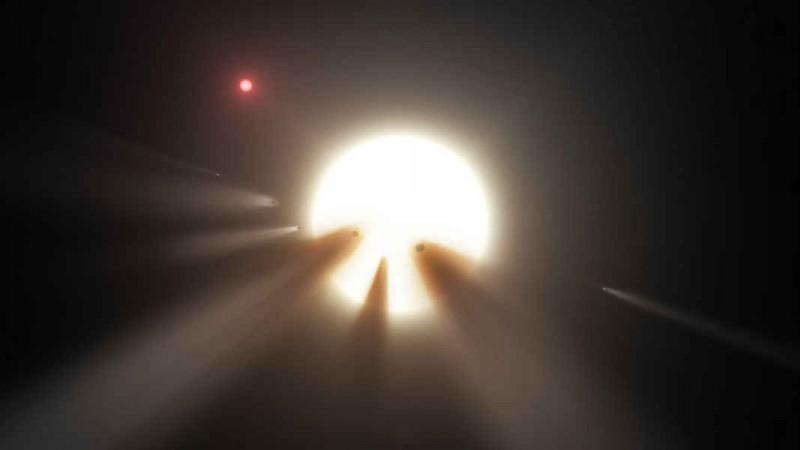An unusual discovery was made by Yale University's Tabetha Boyajian and her colleagues in September 2015, when they observed that a star dubbed KIC 8462852 had dimmed significantly over a span of seven years.
On one occasion its luminosity reduced by 22%. NASA's Kepler telescope began acquiring data about the star's dimming ways.

The star is located 1,500 light-years from Earth and is also called Tabby star and Boyajian's star in honor of the researcher who investigated the dimming phenomenon.
The fluctuation in the luminosity of the star was found to be noteworthy as it was speculated thaat it may have been caused by an orbiting planet, and astronomers started investigating it further to figure out the cause behind the phenomenon.
Some of the alternative possible causes that the researchers came up with were: A group of shattered comet pieces; presence of interstellar clouds between Boyajian's star and Kepler; inconsistency in the star's core activity and so on.
The most interesting reason for the dimming they came up with, however, was the presence of an alien-built megastructure which collects stellar energy.
These theories are being tested by researchers as far as it is possible to with the resources at hand. The Green Bank Telescope in West Virginia is being used by the $100 million Breakthrough Listen initiative in order to track down signals emitted by the Tabby star.
"The Green Bank's observing run will wrap-up next month," team member Jason Wright, an astronomer at Pennsylvania State University, told space.com.
Different groups of researchers are using different instruments to detect the presence of alien artefacts in and around the Tabby star but they have had no luck so far.
The Tabby star has been studied by Wright over the past 15 months, and he has tried figuring out what's happening with it. Wright agrees with the hypothesis that the fluctuation in luminosity could be due to an interstellar cloud.
"That would have to be some crazy interstellar cloud," he said.
Since Boyajian and her colleagues studied the star in September 2015, curiosity levels have spiked.
Last year astronomer Bradley Schaefer from the Louisiana State University, revealed that the star had seen a 20% percent drop in luminosity between 1890 and 1989, space.com reported.
This revelation was supported by another new finding in 2016 that revealed a 3% dimming between the years 2009 and 2013.
Cosmologists will need to conduct further studies to find out the actual reason behind the dipping luminosity of Boyajian's star, Wright explained.
"I think it's very likely that we haven't heard the right answer yet — that I haven't heard the right answer yet, anyway," Wright said.
Researchers may have to dig deeper to figure out exactly what's causing the strange dimming of Boyajian's star, Wright said.

















